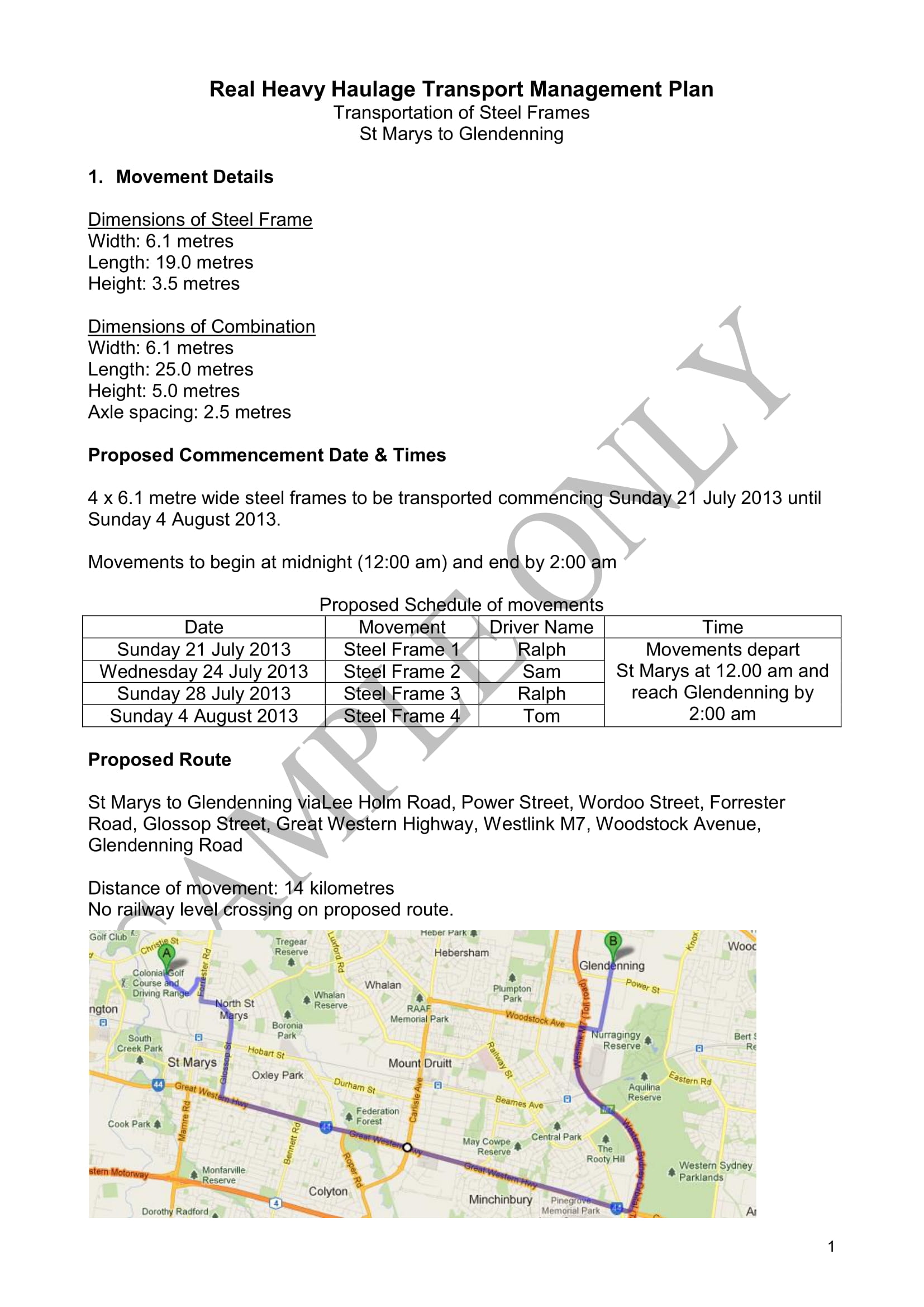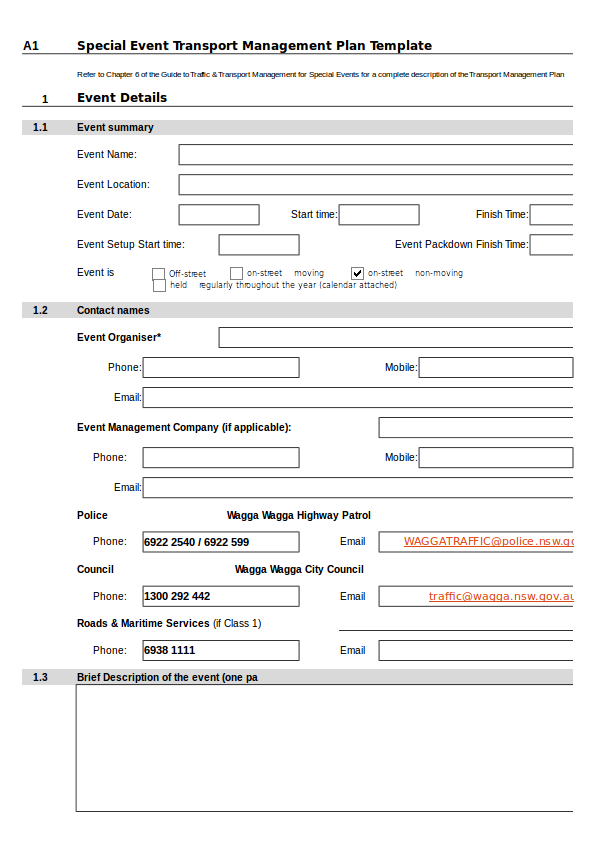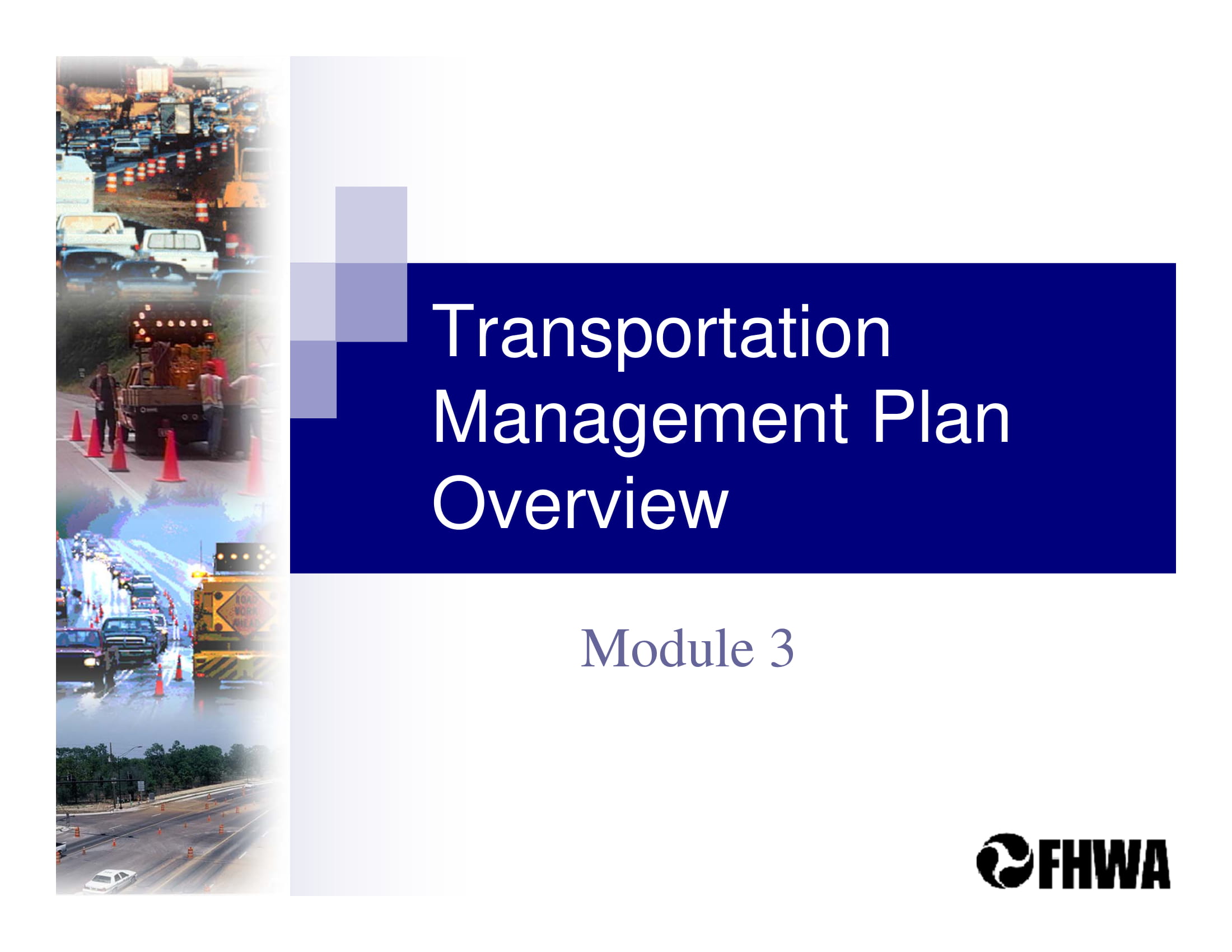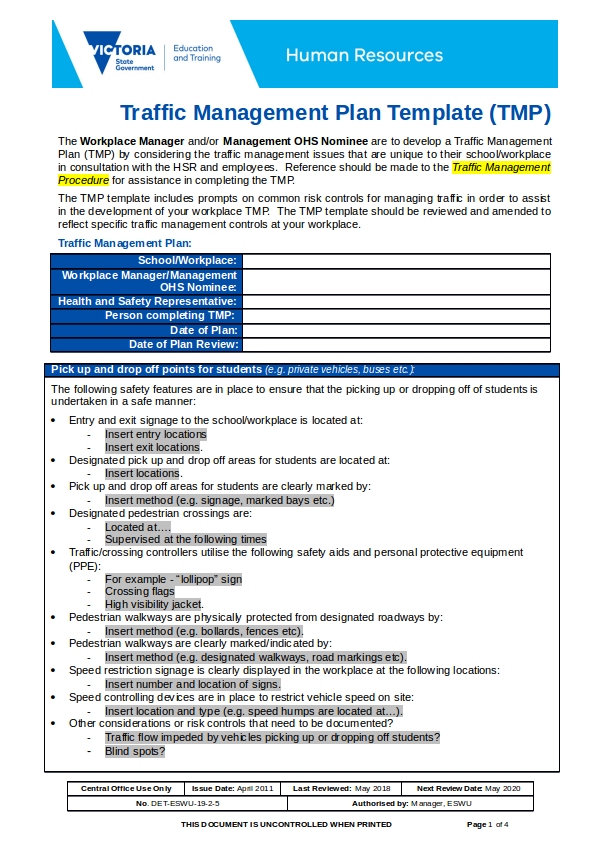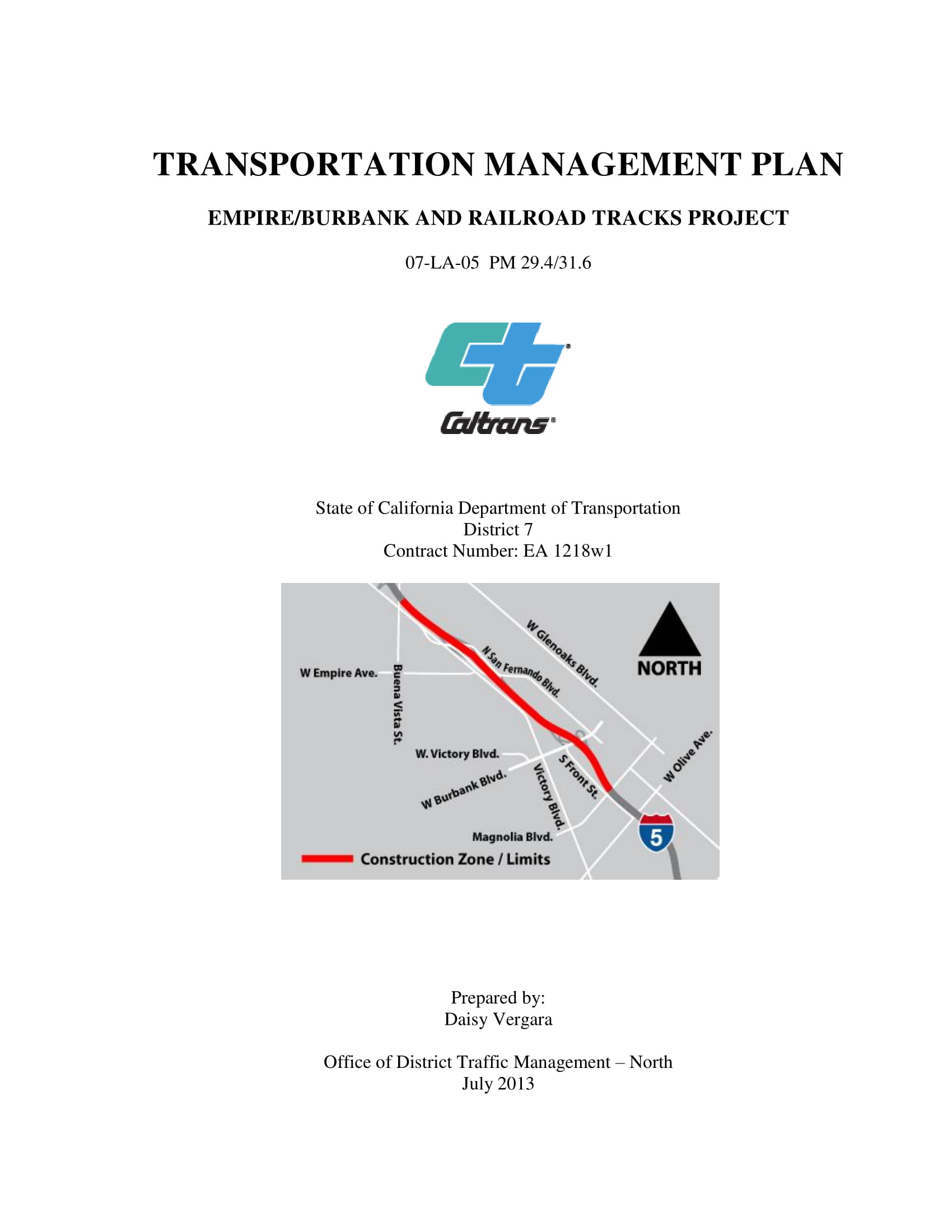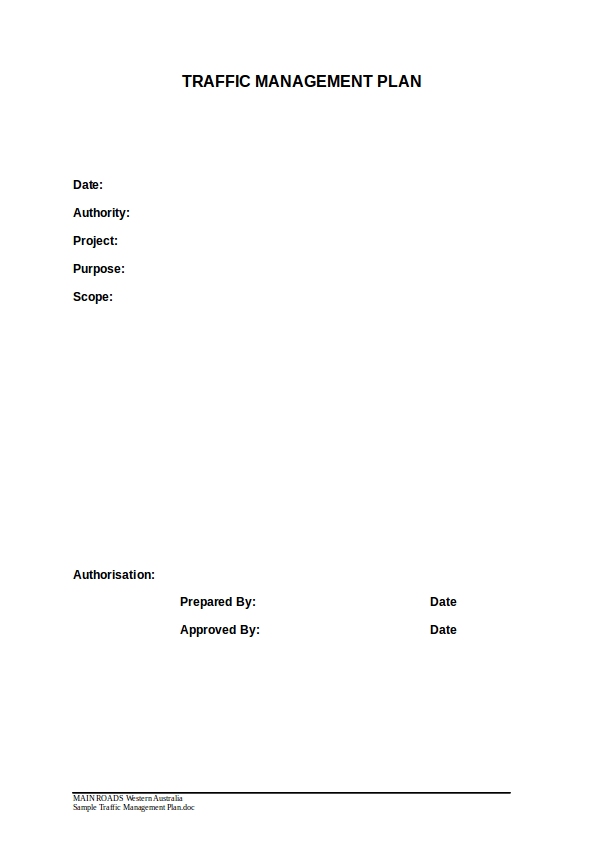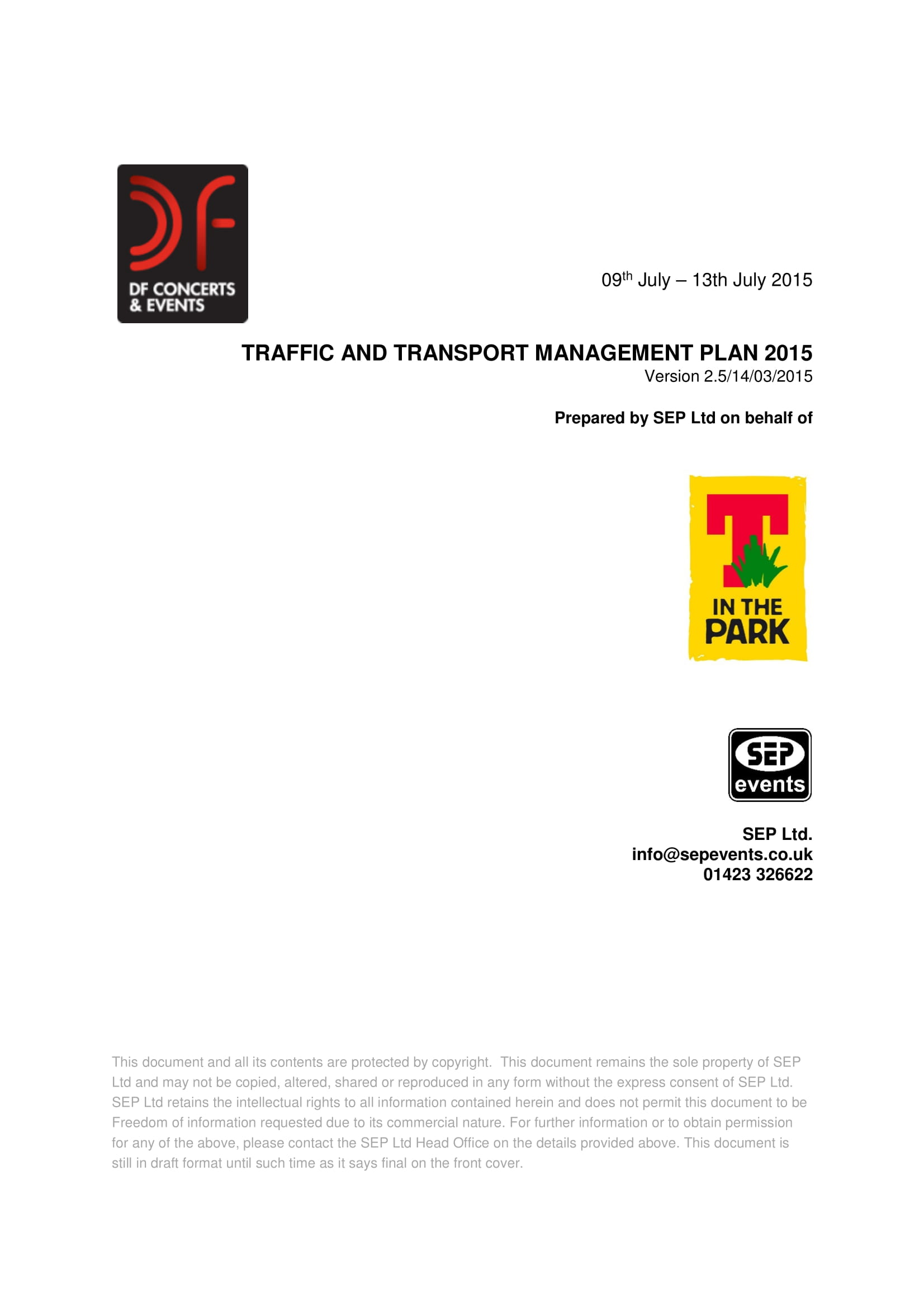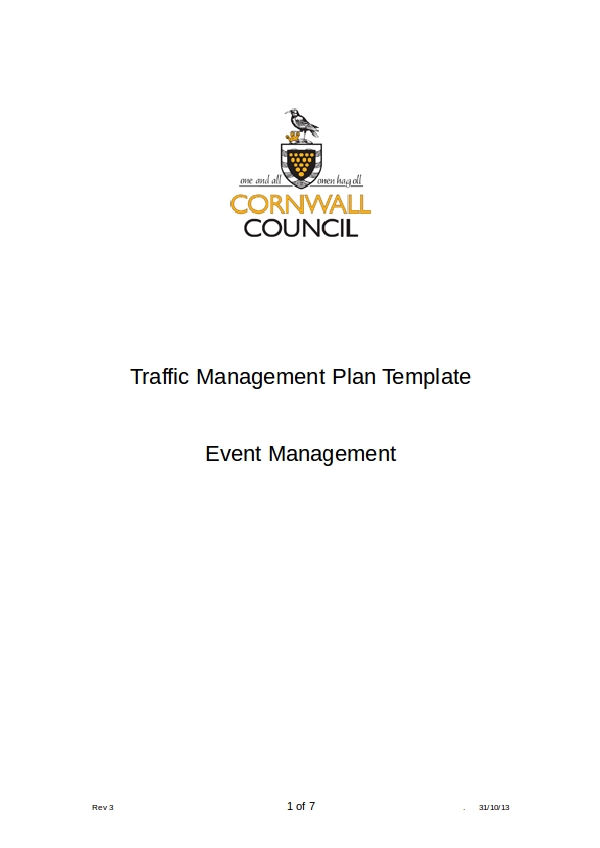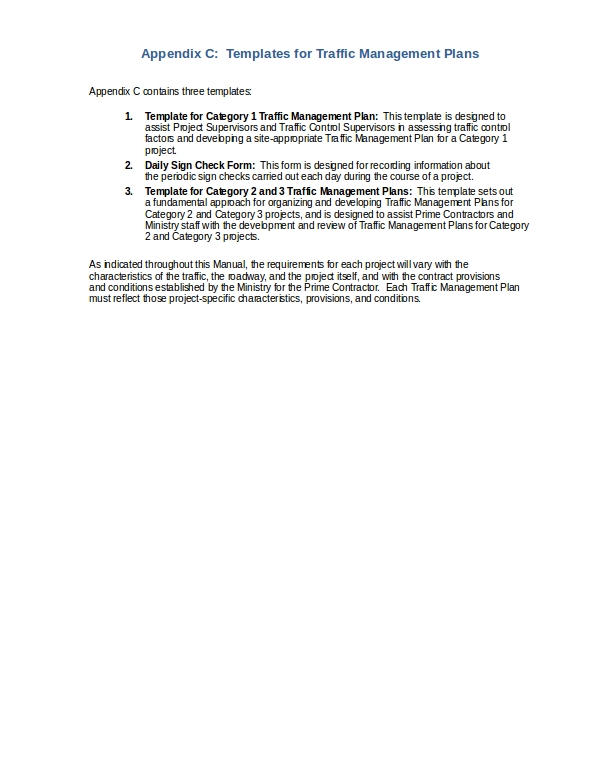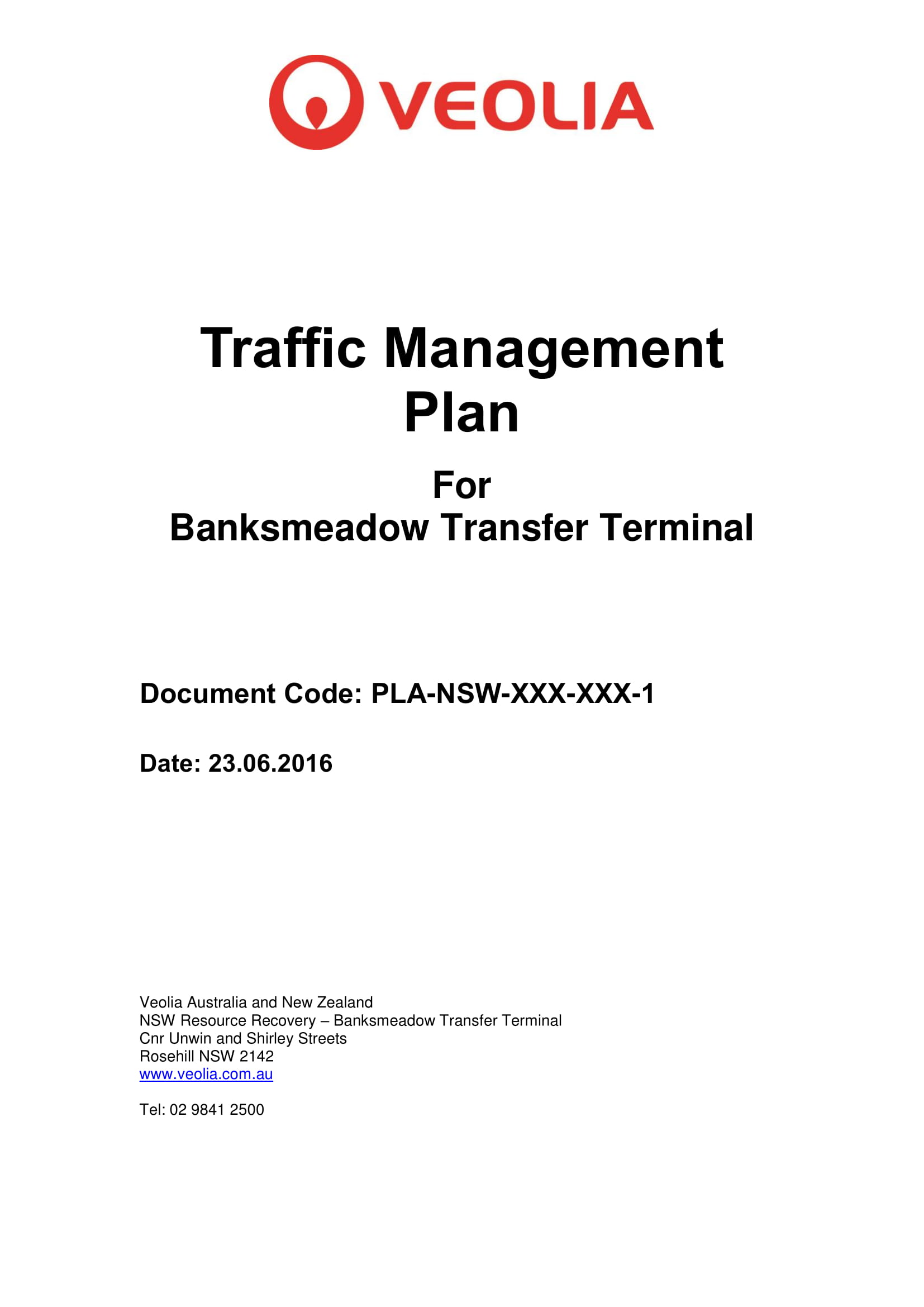11+ Transport Management Plan Examples to Download
Remember when you requested for security and assistance from the authority regarding the use of public roads because you were going to hold a procession, probably because it was fiesta and you happened to be one of the organizers, and you were assigned in the traffic management? So you go out to the authority. But before they would approve you, they asked you something, something called transport management plan. And then you returned home scratching your hair bothered with the question – what is a transport management plan?
Transport Management Plan Example
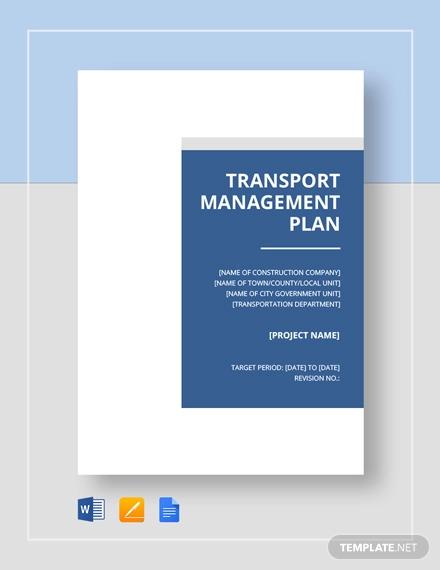
Real Heavy Haulage Transport Management Plan Example
To understand what transport management plan template is, one just have to think about making an itinerary template. And what is an itinerary? An itinerary is about how one intends to travel from one place to another. It is a systematic way of reaching one’s destination. But this is not just the word we hear or mention in a group of friends. We are actually referring to itinerary as a document – a document that describes and demonstrates how one should reach his destination in an efficient, safe, most comfortable manner. That is what an itinerary is.
But transport management plan is more than that, it can also be understood as a traffic. And what is a traffic? In road system management, a traffic is the management of flows of the vehicles, including the pedestrians. Well,
So is transport management plan an itinerary or a traffic? It is neither, because it is both. Well it is close to traffic, but is not just traffic, because a traffic is sort of passive, it stays in one plays.
Sample Transportation Management Plans and Templates Example
When Do You Need a Transport Management Plan?
All road designs actually have a transport management plan in them, supposedly. Before they can design that road, a great consideration of how traffic should flow has already been designed. But there are instances when doing a road project, that a transport management plan is just ignored. And when the road construction is done, it is only when people complain that the designers realize they forgot to consider including a transport management plan.
This means that transport management plan is a necessary thing in all road activities, in contrast to our usual understanding that a transport management plan is only for emergencies, and when there is a need for a change of route, or when there are road changes. But of course, the need for a transport management plan is very evident and strong when there are road changes or emergency.
Special Event Transport Management Plan Template Example
Here’s a scenario, imagine a world without transport planning, where going from one place to another has no route whatsoever. That is unimaginable now that we already have roads. But take your imagination to another level. Imagine piloting a plane, without any route. That is what if means without having a transport management plan. Our air traffic looks empty, there seems to be no pathways, but, there are actually lines in them for the plane to travel. There are actually invisible roads up above for the pilots to travel. Imagine if they did not exist?
If air traffic is complicated, just imagine in a plain ground, where there are no pathways. There is no system, there is no left lane, or right. Anywhere you go, it is always right (- no wrong, no left). That is what is meant by no transport planning. Imagine if they were cars, and not people. Well, a good example is the one you see on the malls, were kids ride bump cars.
Our dependence on transportation is actually a dependence on the availability of roads and highways. You can not have cars without roads. Well, you can. You can drive them in the desert. But that is not normal, that is extreme sports. But you can build roads without cars. People can still used them for whatever reasons.
We can discuss on which came first, the railway or the train. But that can only lead to a deadlock. The safest answer here is, the making of the railway is at co-terminus with the making of train. And that is what we call transport planning. The systematic consideration of the road, highway, railroad in the planning of using the vehicles.
But we take them for granted. We celebrate cars, we do not celebrate roads. We celebrate trains, we do not celebrate railways. We showcase planes, but we do not showcase airspace. That is our mentality, which needs some change. We only give credits to the one we are attached to, not to the ones attached to the ones we are attached to.
This is the importance of transport management planning. Our life would have been a chaotic one without it. It is the one that gives our transportation system systematic. The parody “if there is a wheel, there is a way” does not work that way. That will only lead to more chaos. It should be the other way around. But of course, we know that it is just a parody from the saying, “if there is a will, there is always a way.”
Transportation Management Plan Overview Example
Emergency Works
The most frequent occurrence of transport management plan is when there is an emergency. That should not be the case as mentioned earlier. But if that is happening, that tells a lot about the people in the area. In some places, road planning has been given emphasis, the same emphasis given to designing a new vehicle. Transport management should have been planned before doing something else, and not after something else has happened. It should have been a design for preventing accidents, and not a cure – a resolution, after accidents.
Traffic Management Plant Template Example
Security Concerns in Transport Management Plan
Public transport poses a higher risk to individuals. That is why we have traffic control systems. The use of a traffic sign not only is helpful in organizing the flow of the traffic, it also teaches us that if we have to be safe in the public highways, we need a certain system, we need some little organizing.
Imagine if there were no traffic signs. Imagine if there were no traffic enforces. Do you think drivers would have the patience to give way to other drivers. Is the zipper approach to public driving possible?
The security concerns in transport management plan should have been based from the principle that in all circumstances, the human life is above all else, the human life is above traffic, above vehicles. That in case of collision between a car and a human, the human life should be prioritized, should be protected. That should be the standpoint. So the traffic signs that we design are not actually for cars, it is for us to be protected from accidents.
Transportation Management Plant Example
Who Designs Transport Management Plan?
The only authorized persons for designing transport management plan should be engineers. But in cases, when there are already roads, and an institution might decide to use the public roads for some reason such as a procession, like a mardi gra, fiesta celebrations, et cetera, any one may just proposed his own plan.
Application and Approval Process
But it should need some approval from the authorities of the public highways. The purpose of which is, there are things to be considered when asking for re routes, or for using the roads, such things as safety concerns, security concerns, and correct placement and directions for the route.
Proposal Traffic Management Plan Example
Considerations When Making a Transport Management Plan
- Carriageway levels. At times, it is so easy to neglect the carriageway levels. When asking for permission to use the road (for example, for processional use), do you even consider if there is still some space for the vehicles. What are some consequences for the reroutes? Will it create a butterfly effect, extending the traffic congestion to a few miles.
- Speed limits register. Depending on your locality, some place may allow for a less strict speed limit. There are many considerations, is the highway closed for people, is the road plain, is it solely for fast moving cars only? Otherwise, if there are people in the neighboring areas, if there are small cars, if there are slow moving vehicles, then the speed limit will be stricter.
Traffic and Transport Management Plan 2015 Example
Other Considerations
- Site Condition Ratings. And when constructing a new roadway, do we even consider the number of vehicles around in the locality and the extending areas? What kind of materials are we using for the road. Is a concrete cement better than an asphalt in that particular location? What about the pedestrian?
- Crash reports. It would also affect the approval if there are too many crash reports in the said section of the road. If there are too many crash reports, that says a lot about the kind of the road.
- Weight Loads. In some situations, a weight load is another aspect to be considered when preparing a transport management. This is because, roads are designed to be commensurate in the kinds of vehicles that will make use of them.
Transport management plan is essential to our living. When we go to work, we need a transportation. When we go home, we need transportation. Without transportation, we are at a big loss. Despite having a transportation, our business industry is suffering for this lack of discipline. And as such, this has caused a lot of traffic. Traffic, as you can read in news reports, is one of the most common reasons why some business establishment is at lost.
Cornwall Traffic Management Template Example
Basic Traffic Laws
Traffic laws vary from one place to another. A traffic law may be the same for another, but it may not be applicable to all, such as which side of lane to occupy. Nevertheless, there are still the very basic universal laws.
- Basic traffic rules and manners. Always observe traffic signs: red means stop, blue means go, yellow stands for caution. The not so common one is orange, which is used for construction activities. If there are no traffic signs or when they are not working, usually, a traffic enforcer will be assigned to manage the intersection. But if there are not enforcers, the use of a zipper technique is very effective and modest. But not all drivers are familiar with that, or when they are familiar, they just do not apply it.
- Rules and manners for cars. The basic rule is that humans are above cars. If you are driving a car, a pedestrian should always be prioritized. The reason is protection of human life. A collision between a car and a human results to an obvious lost on the side of the living organic being. Also, do not drive and drink at the same time. But even more so, do not drive if you do not have a license.
- Rules and manners for pedestrians. Although, you do not need a license for crossing and walking the roads, it is important that you observe any traffic signs. Just because drivers have to be careful to get in contact with you, it does not mean you can just do anything on the road.
- Rules and manners for bicycles. Riding in most countries do no require a driving license. But still, the observation of basic traffic signs should be observe even if you are just on a pedal bike.
- Driver’s license. Anywhere in the world, the advice is that everyone gets a driver’s licence, if they should decide to be driving. Sometimes, the only reason why you should get a driver’s license is that when there is an accident, especially a collision, the one without a licence is always the one at fault, regardless of other considerations.
- Car insurance. Car insurance policy is obliged in most countries. And in places where it is not obliged, it would be a good idea to really have one. This will save you in case of emergencies, and accidents.
Templates for Traffic Management Plans Example
Veolia Traffic Management Plan
When planning for a transport management plan, always keep these basic traffic rules in mind. Always consider other obstacles in driving. We are not talking here of a circuit, a race track. We are talking here of a public highway, that is, a road to be used by all citizens. And by citizens, that includes, kids and the elderly alike who my have no knowledge whatsoever about traffic laws.



